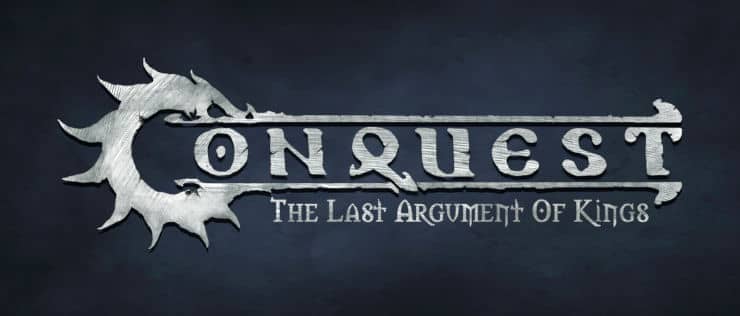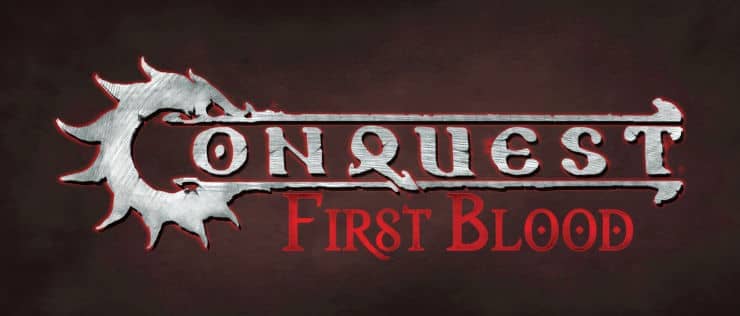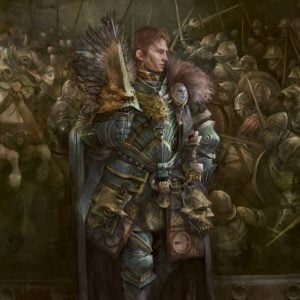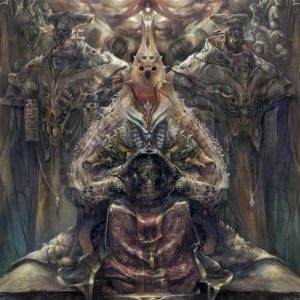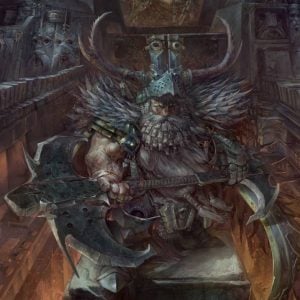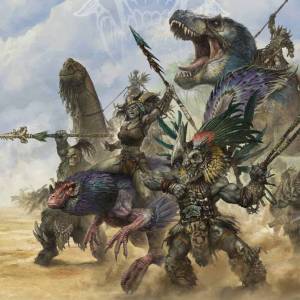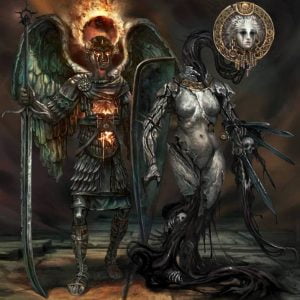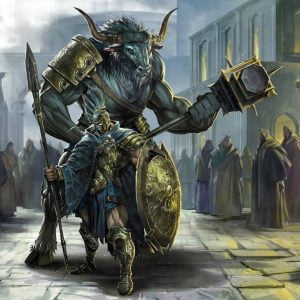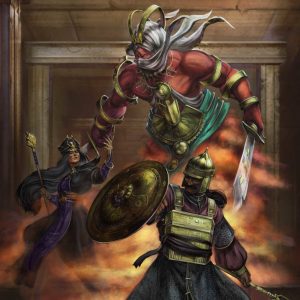
The middlemost oasis within the wastelands, Omgorahuli, sprouted from the ruins of the once great Myrias Spire, which came to be known as Ghan’ta by the W’adrhŭn – meaning Demon’s Tongue in the tribal tongue. The oasis is known for its intense tropical climate; combined with the overbearing moisture, Omgorahuli’s jungle backdrop clings to the skin and stifles the lungs of the unprepared. The plant-life of the region mirrors the chaotic and overwhelming nature of the environment: sprawling vines and protruding roots shroud the ground in its entirety, while the trees and bushes merge together to form near-impassable environmental partitions. Coupled with a plethora of buzzing insects, venomous serpents, and hungering jungle predators, and it becomes abundantly clear why Omgorahuli has garnered such infamy throughout the Wasteland – the potential ways one can die within the oasis are varied indeed.
The oasis’ founding is closely tied to a W’adrhŭn tale of monumental significance: that of Omgorah the Unbound, the legendary raptor patriarch. When the Spire known as Abhoreth fell at the hands of the Dweghom, during the clash known as the Bloody Dawn, the nascent and newly freed W’adrhŭn were forced to flee and abandon the only home they had ever known. During those turbulent and uncertain times, the fledgling species – with their living goddess leading their emerging civilization – ventured north, into the chaos of the forming wastelands. Many were lost, at the time, but not all perished and, from those groups that were separated from the rest of their people, a small group came across an all too familiar sight within the vastness of the Wasteland. That sight was none other than the Spire of Ghan’ta, which lorded over the forbidding horizon of the vast Claustrine Mountains.
The group’s arrival was timely. Heavily damaged during the Exile Campaign of the Dweghom, the battered Spire never had a chance to be repaired by its masters; for from cracks caused by the Dweghom’s siege, a terror had been unleashed within Myrias’ bowels, wreaking death and havoc on the Exiles within. Now, mere hours after the W’adrhŭn had first laid eyes on the Spire, the Fall of Hazlia took place, plunging the sky in ash and darkness and shaking the entire world. Before their very eyes, the weakened Spire finally cracked, as powerful earthquakes shook its already crumbling structure – and from the steaming rubble the terror within immerged: Omgorah the Unbound, a raptor unlike any other, stood upon the ruins of the Spire and roared his defiance at the open world. The great raptor was a predatory juggernaut, driven into a frenzy that allowed him to feel no pain or fatigue as he hunted down his disoriented enemies, leading his pack against what few Exiles had survived their home’s destruction. At the sight of such chaos, the W’adrhŭn left the fallen Spire to its fate, forging their destiny elsewhere within the Wasteland.
Years later, some of the tribes that were driven from the oasis of Huenantli, would return to the sight of Ghan’ta’s fall, finding the lush tropical oasis that had formed around its colossal carcass. Ghan’ta was a young Spire, with ample reserves of life-giving substances and live biological specimens that were stored in its underbelly, releasing them upon its death and causing a deluge of new life to emerge in the surrounding area. Rulers of this new ecosystem was Omgorah and his brood, who nevertheless did not perceive the arriving W’adrhŭn as prey, allowing them to settle within the verdant expanse he called his lair. Seeing Omgorah as the one who brought down Ghan’ta and a protector of their kind, the tribes named the newly discovered oasis Omgorahuli, roughly meaning Omgorah’s Rest, in honor of the raptor patriarch’s mythical feat and legend says that it was the Unbound, a paragon of bestial lethality, that helped the tribal Speakers learn how to best communicate with his kind. While the Unbound eventually passed away and became the stuff of legends and tales shared by the Cult of Famine with all Tribes, his lineage survives into the present, consisting of genetically superior raptor mounts that are collectively known as the Brood of Omgorah – serving as exalted mounts that fight alongside the W’adrhŭn but remaining notoriously hard to control, save by the most accomplished Speakers.
While many of the tales of Omgorah the Unbound and the creation of Omgorahuli might not be entirely rooted in truth and facts, their symbolic meaning is still of great importance within W’adrhŭn culture, signifying perseverance and rebirth during chaotic and uncertain times. Today, the main city of Omgorahuli is located to the west of the oasis: it is built upon a great stretch of freshwater wetlands, supported by countless elevated wooden platforms that separate it from the murky waters below. Virtually none of the W’adrhŭn city is constructed atop solid land, for the surrounding jungle is too chaotic and dangerous to support such endeavors. Instead, the locals weave their urban tapestry atop Omgorahuli’s marshlands – having created a patchwork city, made of bound wood and reed roofs, that exists in harmony with its aquatic environment.
At the center of the oasis, one can find Ghan’ta’s fibrous carcass; when the Spire’s stem toppled over, it cracked open the very earth, creating a massive chasm that spans the entirety of the oasis’ eastern side. The gigantic rift came to be known as Tun’tuki, meaning Evil Grin, and connected the Spire’s underbelly with the surface. Geysers spew bubbling Spire-born discharge from within Ghan’ta’s bowels, further enhancing the many Spire-created organisms that live near or inside the great chasm. Matriarch Myanmatu rules over Omgorahuli, acting as the oasis’ sole leader and enforcing the Ukunfazane’s will. The Matriarch Queen is said to have a striking passion for herbology, spending much of her time in an effort to catalogue and harness the power of Omgorahuli’s miraculous plant-life.

